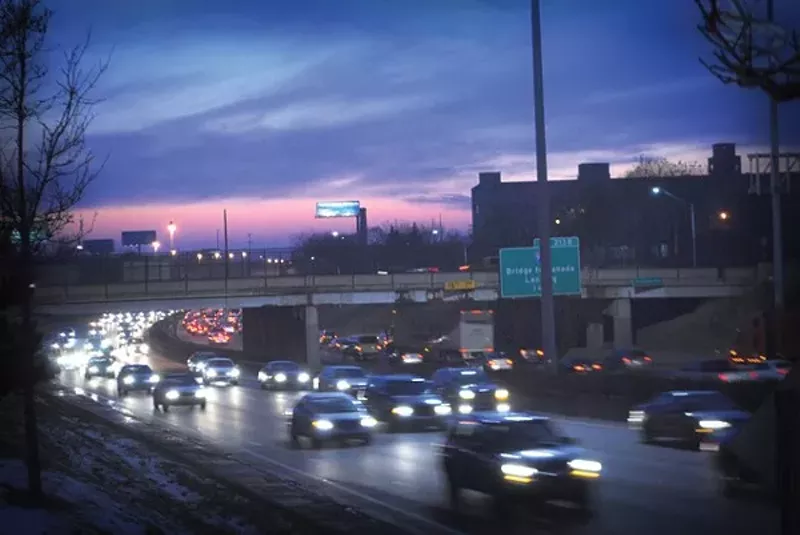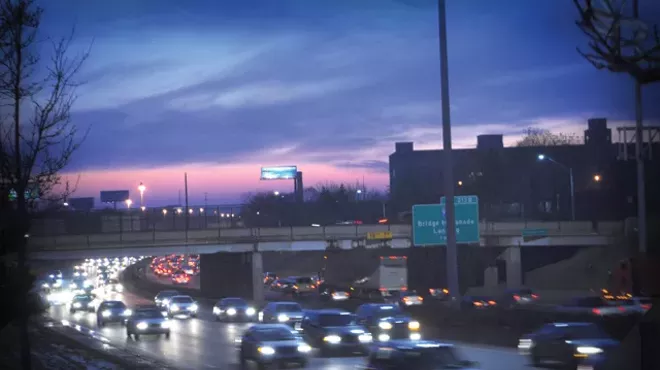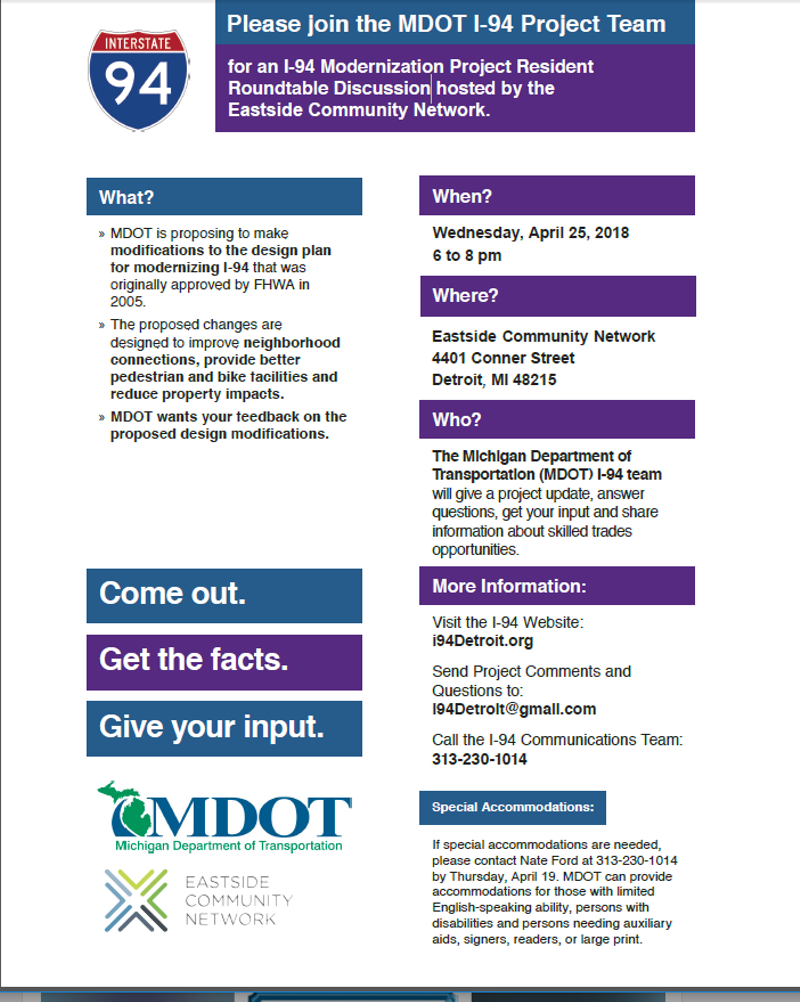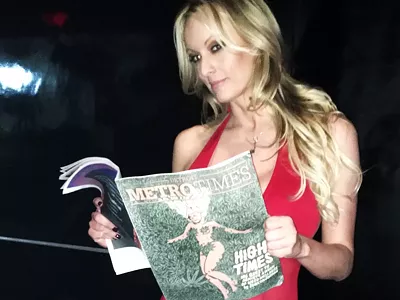
Photo courtesy Ryan Felton
The Michigan Department of Transportation's proposed widening of I-94 could include the removal of many pedestrian overpasses between Midtown and New Center. Originally, it had even called for the removal of the Trumbull Avenue bridge, seen here.
In 2012, the Michigan Department of Transportation dusted off a 20-year-old plan to widen I-94 through the mid-city area and announced that it was going to follow through on it.
The plan would dramatically expand a 6.7-mile stretch of the Edsel Ford Freeway, between I-96 and Conner Avenue, adding one lane in each direction, as well as continuous service drives. At a cost of $3 billion dollars, the project would be completed sometime in 2036.
Almost immediately, critics contended that the project was a waste of money, a way of doubling down on the freeways that had already done so much damage to Detroit in the 1950s and 1960s. Though critics agreed that the freeway could use some long-deferred maintenance, especially to its crumbling bridges, it was the expansion and widening that alarmed them the most.
Widening the freeway would expand the physical gap separating Tech Town and New Center from Midtown at a time when the latter is bursting at the seams with development and investment prepared to spill every which way. The proposed demolition of several pedestrian bridges would make getting around town more difficult for non-motorists. What’s more, the 1992 plan called for more building demolitions, including United Sounds Systems recording studio, which is now a contender for historical designation. The construction would require the demolition of an add-on to University Prep Academy.
Opponents of the freeway have been vocal early and often. In 2013, a special meeting of the Southeast Michigan Council of Governments was convened at the Atheneum Hotel in downtown Detroit, where scores of educated young people showed up and pleaded with authorities to not expand I-94 and remove all the bridges linking the area. After hearing their testimony, SEMCOG approved the plan anyway. In September 2014, a study published by the U.S. Public Interest Research Group blasted the I-94 expansion project as one of the nation’s worst “highway boondoggles” in the works. During his first run for mayor of Detroit, Mike Duggan's spokespeople said he harbored some searching questions about the project.
Since then, MDOT has continued to hold meetings with the public, and has even apparently backed off the removal of some vehicular bridges, although some question how carefully the department is listening. Over and over again, the department falls back on arguments about capacity and congestion-fighting that sound right out of the 1950s. In fact, the contention that expanding highways fights congestion has been largely disproved by the entire urban planning profession. As younger people drive cars less and are more excited by rail transit and cycling, as oil prices continue to rise, stalled only by ecocidal fracking, and as attitudes toward suburban car culture continue to chill, the department has stood by its plan to speed people through Detroit, even if it means blasting and imploding more of the city.
This is why a recent invitation to the public to "join the MDOT I-94 Project Team" has excited interest among some of the project's most vocal critics. One remarked the other day that it almost seemed the department — after so many years of pleading — has decided to entertain the idea of a less destructive, less divisive "modernization" of the expressway. Or at least in the areas flanking Woodward Avenue?
Whatever force is driving this development, there are a few things worth noting:
• While the meeting should be lively, the flier includes information on how to offer feedback without attending. Potentially, thousands of comments demanding a limited footprint or the rejection of continuous service drives could make it to the department.
• Although the most politically active critics have opposed the expansion around Woodward, now is also a good time for east siders, Fourth Streeters, and others to make their voices heard.








